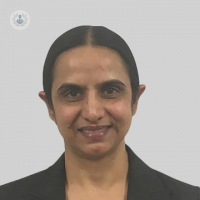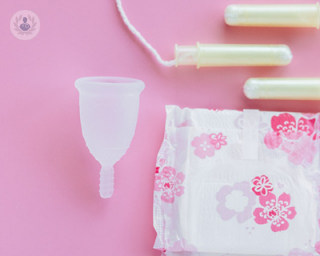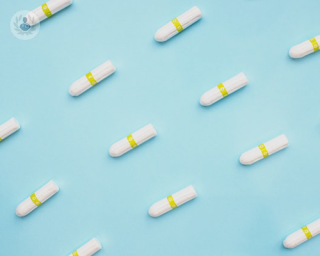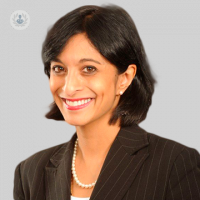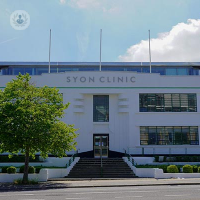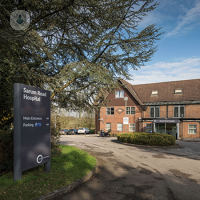Menstrual disorders
Ms Ravinder Kalkat - Obstetrics & gynaecology
Created on: 02-09-2018
Updated on: 12-21-2023
Edited by: Aoife Maguire
What are the different types of menstrual disorders?
There are numerous types of menstrual disorders, which are as follows:
Disorders of cycle length:
- Amenorrhea (absence of menstruation)
- Oligomenorrhea (infrequent menstrual periods that happen more than 35 days apart)
Disorders of flow (abnormal uterine bleeding):
- Hypomenorrhea (light bleeding during menstruation)
- Menorrhagia (heavy bleeding or prolonged menstrual periods)
- Metrorrhagia (bleeding at irregular times outside the menstruation period)
- Intermenstrual bleeding (bleeding in between periods)
Other menstrual disorders:
- Dysmenorrhea (painful cramps during menstruation)
- Premenstrual syndrome (PMS) (a range of physical and emotional symptoms that occur one to two weeks before the menstruation period)
- Premenstrual dysphonic disorder (PMDD) (a more severe form of PMS that is considered a mental health disorder)
What are the symptoms of menstrual disorders?
Amenorrhea:
- Absence of period (not including pre-pubescence, post-menopause or pregnancy).
- Primary amenorrhea is when a girl does not begin to menstruate by the age of 16.
- Secondary amenorrhea happens when previously regular periods stop for at least 3 months.
Menorrhagia:
- A type of abnormal uterine bleeding (AUB).
- When menstrual bleeding is so excessive that women have to put their lives on hold temporarily.
- Women may need to change their sanitary wear more than once in an hour.
- Periods can last longer, for more than 10 days.
Dysmenorrhea:
- Primary dysmenorrhea – pain caused by menstruation.
- Secondary dysmenorrhea – pain caused by other problems such as fibroids or endometriosis.
- Extremely painful and persistent menstrual cramps.
- Pain can be sharp, dull or aching in the lower abdomen or pelvis.
Premenstrual syndrome (PMS):
- Most women experience PMS before their period.
- Physical symptoms include bloating, tender breasts, fatigue, clumsiness, headaches, food cravings and constipation.
- Emotional symptoms include anger, anxiety, depression, lack of concentration.
What causes menstrual disorders?
Amenorrhea and oligomenorrhea:
- Weight loss or eating disorders
- Delayed puberty
- Polycystic ovary syndrome (PCOS) and other hormonal problems
- Stress
- Extreme athletic training or steroid use
Menorrhagia and irregular bleeding:
- Hormonal imbalances
- Anovulation (when ovulation does not happen, heavy bleeding can occur)
- Fibroids
- Uterine polyps
- Endometriosis
- Contraceptive medication
- Cancer
- Infection of the uterus or cervix
Dysmenorrhea:
- Primary dysmenorrhea is thought to be caused by inflammatory chemicals which are produced in the uterus and contribute to heavy bleeding. No clear underlying cause has been identified.
- Secondary dysmenorrhea is caused by other conditions, such as endometriosis, fibroids, or the intrauterine device (IUD).
What is the treatment for these menstrual disorders?
Often investigations are required to diagnose any underlying cause accounting for the symptoms. It is important to make sure you are not pregnant. Most commonly investigations are done by transvaginal pelvic ultrasound, although sometimes an MRI is used and additionally blood tests may be required. Bleeding after sex, in between periods or after the menopause needs to be urgently investigated.
Abnormal uterine bleeding:
- Anti-inflammatory and non-hormonal tablets can be used.
- Birth control pills can help to regulate menstrual bleeding.
- Addressing other hormonal factors.
- Using the intrauterine system which releases a small amount of hormone into the womb lining.
- Surgical procedures to address underlying problems, such as endometrial ablation to remove the uterine lining, a myomectomy to remove fibroids, both of which may affect fertility or as a last resort, a hysterectomy, to remove the womb.
Dysmenorrhea:
- Over-the-counter painkillers can help.
- Birth control pills can also help sometimes to reduce menstrual cramps.
- Mild exercise can help too as well as other lifestyle interventions.
- The intrauterine system may be useful.
- Depending on the cause, surgery may also be an option, and this is most often performed by laparoscopy.
PMS and PMDD:
- PMDD requires specialist treatment, and may involve anti-depressants or hormonal treatments being prescribed.
- PMS can benefit from exercise and dietary choices, such as reducing caffeine and alcohol intake.
- Involvement of a multidisciplinary team is often helpful so that different strategies can be considered.
